#transport monitoring and management software
Explore tagged Tumblr posts
Text
Streamlining Operations: Transport Monitoring and Management Software
In today’s fast-paced world, businesses rely on efficient transportation systems to deliver goods, services, and people to their destinations reliably and cost-effectively. Transport monitoring and management software have emerged as indispensable tools for businesses seeking to optimize their transportation operations, improve efficiency, and enhance customer satisfaction. In this blog, we’ll explore the significance of transport monitoring and management software, its key features, benefits, and how it revolutionizes the way businesses manage their transportation fleets.
Understanding Transport Monitoring and Management Software: Transport monitoring and management software encompasses a suite of tools and technologies designed to streamline the planning, tracking, and management of transportation operations. From route optimization and vehicle tracking to driver management and compliance monitoring, this software provides businesses with the insights and tools they need to optimize their transportation operations and deliver superior service to their customers.
Key Features of Transport Monitoring and Management Software:
Route Optimization: Transport management software analyzes various factors such as traffic patterns, road conditions, and delivery schedules to optimize routes for maximum efficiency and cost savings.
Vehicle Tracking: Real-time GPS tracking allows businesses to monitor the location and status of their vehicles, enabling better visibility and control over their fleet operations.
Driver Management: Transport management software helps businesses manage driver schedules, assignments, and performance, ensuring compliance with regulations and optimizing driver productivity.
Compliance Monitoring: Transport management software tracks regulatory compliance requirements such as driver hours of service, vehicle maintenance schedules, and safety regulations to ensure adherence and mitigate risks.
Reporting and Analytics: Robust reporting and analytics tools provide businesses with actionable insights into key performance metrics such as delivery times, fuel consumption, and fleet utilization, enabling data-driven decision-making and continuous improvement.
Benefits of Transport Monitoring and Management Software:
Increased Efficiency: By optimizing routes, tracking vehicle locations, and monitoring driver performance, transport management software helps businesses improve operational efficiency and reduce costs.
Enhanced Customer Service: Real-time tracking and accurate delivery ETAs enable businesses to provide superior customer service, leading to increased customer satisfaction and loyalty.
Improved Safety and Compliance: Transport management software helps businesses ensure compliance with regulatory requirements and implement safety measures to reduce accidents and liabilities.
Cost Savings: By optimizing routes, reducing fuel consumption, and improving resource utilization, transport management software helps businesses save on operational costs and maximize profitability.
Scalability and Flexibility: Transport management software is scalable and adaptable to the changing needs of businesses, enabling them to grow and expand their operations seamlessly.
Conclusion: Transport monitoring and management software have become essential tools for businesses looking to streamline their transportation operations, improve efficiency, and deliver exceptional service to their customers. With features such as route optimization, vehicle tracking, driver management, and compliance monitoring, this software empowers businesses to optimize their fleet operations, reduce costs, and stay ahead of the competition in today’s dynamic marketplace. As businesses continue to prioritize efficiency and innovation, transport monitoring and management software will play a crucial role in helping them achieve their goals and drive success in the ever-evolving world of transportation logistics.
#artificial-intelligence#Gps vehicle tracking system company in dubai#iot#School bus tracking software dubai#supply-chain-management#sustainability#technology#transport monitoring and management software
0 notes
Text
Revolutionize Your Logistics: Unleash Efficiency with Cutting-Edge Transport Monitoring and Management Software!
In the fast-paced world of logistics and transportation, staying ahead means embracing innovation. Introducing our Transport Monitoring and Management Software, the game-changer your business needs to thrive in today's competitive landscape.
Imagine having complete visibility and control over your entire transportation operation at your fingertips. With our software, you can track vehicles in real-time, optimize routes, and efficiently manage your fleet, all from one intuitive platform. Say goodbye to guesswork and hello to data-driven decision-making.
But that's not all. Our software goes beyond basic tracking. It empowers you to streamline processes, minimize delays, and maximize resource utilization. From inventory management to driver performance analytics, we've got you covered every step of the way.
Safety is paramount in transportation, and our software prioritizes it. With advanced features like predictive maintenance and driver behavior monitoring, you can ensure compliance with regulations and keep your assets and personnel safe at all times.
Let's not forget about the bottom line. By optimizing your transportation operations with our software, you'll see significant cost savings. Whether it's through fuel efficiency, reduced idle time, or improved route planning, every aspect of your business will benefit financially.
In today's interconnected world, customer satisfaction is non-negotiable. Our software helps you deliver exceptional service by providing accurate delivery estimates, proactive notifications, and seamless communication channels with your customers.
Don't get left behind in the race for efficiency and effectiveness. Embrace the future of transportation management with our Transport Monitoring and Management Software. Experience the difference it can make for your business today.
Transport Monitoring and Management Software is a comprehensive solution designed to optimize transportation operations across various industries. It allows users to track and manage vehicles, goods, and personnel in real-time, enabling efficient logistics management, route planning, and resource allocation. With features such as GPS tracking, fleet management, inventory control, and performance analytics, this software enhances operational efficiency, reduces costs, improves safety, and enhances customer satisfaction. Whether for shipping, logistics, or public transportation, Transport Monitoring and Management Software provides the tools necessary for streamlined and effective transportation management.
#Transport Monitoring and Management Software#Transport monitoring Dubai#Transport monitoring UAE#Transport management software
0 notes
Text
Revolutionizing Logistics: The Strategic Integration of BPO Services
In the fast-paced world of logistics, companies are increasingly turning to Business Process Outsourcing (BPO) services to navigate challenges, streamline operations, and foster sustained growth. This blog explores the how and whys behind the utilization of BPO services in the logistics sector.

Unpacking the Dynamics of Logistics Business Process Outsourcing
1. Enhancing Operational Efficiency
At the core of Logistics Business Process Outsourcing lies a commitment to enhancing operational efficiency. Logistics companies leverage BPO services to streamline intricate processes, from order management to inventory control. This strategic move allows these companies to focus on their core competencies while experts handle the nuances of logistics operations.
2. Optimizing Costs for Scalability
Cost optimization is a driving force behind the adoption of Logistics Business Process Outsourcing. Logistics companies can scale their operations without the burden of significant overhead costs. BPO services offer a cost-effective solution for scalability, allowing businesses to align their resources with the demands of a dynamic market without compromising profitability.
LOGISTICS BACK OFFICE: A Strategic Backbone
1. Efficient Data Management
The LOGISTICS BACK OFFICE becomes a strategic backbone for logistics companies, especially in terms of efficient data management. BPO services specialize in handling vast amounts of data, ensuring accuracy, compliance, and timely reporting. This data-centric approach empowers logistics companies with actionable insights for informed decision-making.
2. Navigating Regulatory Compliance
Logistics Back Office Services play a pivotal role in navigating the complex web of regulatory compliance. From customs documentation to adherence to international shipping standards, BPO services ensure that logistics companies operate within the bounds of regulations. This meticulous approach minimizes risks and positions businesses for global success.
The Strategic Integration of Logistics Back Office Services
1. Harnessing Technological Advancements
The utilization of Logistics Back Office Services is synonymous with harnessing technological advancements. BPO providers leverage state-of-the-art technologies, including automation and analytics, to optimize logistics processes. This tech-savvy integration ensures precision, speed, and adaptability in the face of evolving market demands.
2. Strategic Focus on Core Competencies
The strategic integration of Logistics Back Office Services allows logistics companies to maintain a laser focus on core competencies. Whether it's refining supply chain strategies, optimizing transportation routes, or enhancing customer experiences, BPO services become the operational backbone that handles non-core functions with unparalleled expertise.
Conclusion: Redefining Logistics Excellence
In conclusion, Logistics Business Process Outsourcing, especially through the utilization of LOGISTICS BACK OFFICE Services, emerges as a transformative strategy for logistics companies. By enhancing efficiency, optimizing costs, and strategically integrating back-office support, businesses redefine logistics excellence in a competitive landscape.
As logistics companies embrace the symbiotic relationship with BPO services, they not only navigate operational challenges but also position themselves as agile, tech-driven, and poised for sustained growth. The strategic integration of Logistics Back Office Services is not merely a trend; it's a paradigm shift that propels logistics companies toward a future defined by operational excellence and global competitiveness.
#Logistics Business Process Outsourcing#LOGISTICS BACK OFFICE#Logistics Back Office Services#logistics bpo services#transportation back office#track and trace shipment#TRACK AND TRACE MONITORING#claim processing outsourcing#saas transportation management system#command logistics services#Trucking Dispatch Companies#Bpo services#Support center#Support ticket system#Live chat support#Online support#Customer support software#Healthcare bpo#Healthcare business process outsourcing#load board outsourcing#end to end supply chain#Data entry outsourcing#Business process outsourcing companies#Customer support outsourcing#claim managament#Bpo solutions#Customer support solutions
0 notes
Text
Driving Efficiency: Unveiling the Potential of Fleet Management and Transportation Technology
In the dynamic world of transportation and logistics, staying ahead requires more than just reliable vehicles. Today, businesses are increasingly turning to advanced technologies to streamline their operations, reduce costs, and enhance overall efficiency. One such technological boon is the integration of Fleet Management Systems (FMS) and Transportation Management Software (TMS). In this blog, we delve into the key components of these systems, highlighting their pivotal role in revolutionizing the transportation industry.
Fleet Management System: Transforming Operations
Fleet Management Systems have emerged as a game-changer for businesses involved in transportation. These systems provide an integrated approach to manage various aspects of a fleet, ensuring optimal performance and resource utilization.
Real-time Vehicle Tracking: FMS allows businesses to track their vehicles in real-time, providing precise location data. This not only helps in route optimization but also ensures the security of the transported goods.
Fuel Monitoring System: Efficient fuel management is crucial for cost savings and environmental sustainability. Fuel Monitoring System incorporates fuel monitoring systems that track fuel consumption, identify inefficient driving habits, and contribute to the development of fuel-efficient strategies.
Driver Behavior Monitoring: Enhancing road safety and ensuring responsible driving behavior is a priority for any fleet. FMS includes driver behavior monitoring systems that track various parameters such as speed, harsh acceleration, and abrupt braking. This data helps in identifying and rectifying unsafe driving practices.
Vehicle Health Monitoring: Predictive maintenance is a key feature of modern FMS. By Vehicle Health Monitoring h of each vehicle in real-time, businesses can schedule maintenance tasks proactively, reducing downtime and preventing unexpected breakdowns.
Transportation Management Software: Orchestrating the Supply Chain
Transportation Management Software serves as the brain behind the logistical operations, bringing efficiency to the entire supply chain.
Route Optimization: TMS analyzes various factors such as traffic, weather conditions, and delivery schedules to optimize routes. This not only reduces transit times but also minimizes fuel consumption and associated costs.
Inventory Management: For businesses handling diverse products, effective inventory management is paramount. TMS provides real-time visibility into inventory levels, enabling businesses to maintain optimal stock levels and prevent shortages or overstock situations.
Order Tracking and Visibility: Providing transparency throughout the supply chain, TMS allows businesses and customers to track orders in real-time. This feature enhances customer satisfaction by keeping them informed about the status of their shipments.
Cost Optimization: TMS aids in cost control by optimizing shipping routes, reducing fuel consumption, and minimizing delays. This results in significant cost savings for businesses, making them more competitive in the market.
The Symbiosis of FMS and TMS: A Powerful Combination
When Fleet Management Systems and Transportation Management Software are integrated, businesses experience a synergistic effect. The seamless flow of information between the two systems ensures that decisions are data-driven, leading to enhanced overall efficiency.
Data Integration and Analysis: The integration allows for comprehensive data analysis, providing actionable insights into both the fleet’s performance and the supply chain. This empowers businesses to make informed decisions that positively impact their bottom line.
Enhanced Communication: The communication between FMS and TMS bridges the gap between on-road activities and backend operations. This synergy ensures that any disruptions or changes in the transportation process are promptly communicated and addressed.
Continuous Improvement: The combination of FMS and TMS fosters a culture of continuous improvement. By analyzing data from both systems, businesses can identify areas for optimization, implement corrective measures, and evolve their processes for maximum efficiency.
Conclusion: Shaping the Future of Transportation
In the fast-evolving landscape of transportation and logistics, embracing technology is not just an option but a necessity. Fleet Management Systems and Transportation Management Software are at the forefront of this technological revolution, offering businesses the tools they need to thrive in a competitive environment. By adopting these systems, companies can optimize their operations, reduce costs, and pave the way for a more sustainable and efficient future in transportation.
#fleet management system#transportation management software#fuel monitoring system#driver behaviour monitoring system#vehicle health monitoring system
0 notes
Text

Revolutionize logistics with our cloud-based transport management software, delivering top-tier Transportation Management System solutions. Our eco-friendly approach ensures agile and cost-effective supply chains. Seamlessly integrate freight forwarding software, fleet management systems, and logistics management software for enhanced efficiency. Our TMS system, coupled with enterprise fleet management, offers comprehensive solutions for transportation and logistics. Experience tech-driven excellence in inventory stock management, warehouse tracking, and fleet maintenance. Elevate your operations with our comprehensive suite of logistics solutions, tailored for sustainability and optimal performance.
#warehouse inventory#warehouse management#fleet management software#transport management software#freight forwarding#warehouse monitoring#cloud software#cloud solutions#transport logistics#inventoring tracking#transport logistics management software#software for logistics management#tms software logistics#transport logistic software#freight forwarding system#inventory and stock management software#warehouse inventory tracking software
0 notes
Text
Safety First: How Fleet Management Software Enhances Driver and Vehicle Safety.

Ensuring the safety of drivers and vehicles is a top priority for any fleet-based business. Accidents, maintenance issues, and compliance violations can result in not only financial losses but also harm to individuals. Fleet management software has emerged as a powerful tool in improving safety across all aspects of fleet operations.
In this article, we'll explore how fleet management software enhances driver and vehicle safety, providing numerous benefits to businesses and their employees.
Real-Time Monitoring: Fleet management software offers real-time tracking and monitoring capabilities. Fleet managers can track the location, speed, and behavior of vehicles on the road. This real-time visibility allows for immediate intervention in the case of accidents, breakdowns, or unauthorized vehicle usage. By staying informed, managers can dispatch assistance or emergency services promptly, reducing response times and potentially preventing accidents from escalating.
Driver Behavior Analysis: Many fleet management systems come equipped with driver behavior monitoring features. These systems analyze driver behavior in real-time, flagging unsafe practices such as harsh braking, speeding, or abrupt lane changes. Alerts can be sent to both drivers and managers, enabling timely feedback and coaching. Over time, this data-driven approach helps to promote safer driving habits, reducing the risk of accidents and injuries.
Preventive Maintenance: Regular vehicle maintenance is crucial for safety. Fleet management software can automate maintenance schedules based on mileage, engine hours, or other parameters. It sends alerts to fleet managers and technicians when vehicles are due for maintenance or repairs. By proactively addressing maintenance needs, businesses can prevent breakdowns on the road that may lead to accidents.
Route Optimization: Efficient route planning is not only cost-effective but also safer. Fleet management software can calculate the most optimal routes for drivers, taking into account factors like traffic, weather conditions, and road closures. By avoiding high-risk areas and reducing travel time, this software helps minimize the exposure of drivers to potential hazards.
Compliance and Documentation: Compliance with regulations and safety standards is a legal requirement for fleet operations. Fleet management software can automate the collection and storage of important documentation, such as driver logs, inspection reports, and insurance records. It also provides tools for monitoring driver hours and ensuring adherence to rest and work time regulations, reducing the risk of driver fatigue-related accidents.
Emergency Response Integration: In the event of an accident or emergency, fleet management software can integrate with emergency response systems. This enables faster communication with emergency services, providing accurate vehicle location and incident details. Quick response times can make a significant difference in the outcome of accidents, potentially saving lives.
Fleet management software plays a pivotal role in enhancing driver and vehicle safety. With real-time monitoring, driver behavior analysis, preventive maintenance, route optimization, compliance management, and emergency response integration, businesses can significantly reduce the risks associated with fleet operations. Implementing such software not only improves safety but also contributes to cost savings, regulatory compliance, and overall operational efficiency. For fleet-based businesses, safety should always come first, and fleet management software is a valuable ally in achieving this goal.
#fleet management software#fleet management#fuel monitoring system#transportation#b2b services#saas#technology#fuel efficiency#fleet#truck
0 notes
Text
3 Ways Software Can Revolutionize Your Distribution Strategy.
In today's fiercely competitive business environment, efficient distribution can make or break a company. Customers demand fast, reliable, and cost-effective delivery, and businesses are under constant pressure to optimize their operations to meet these expectations. Distribution management software has emerged as a powerful tool to help companies streamline their distribution processes, reduce costs, and enhance customer satisfaction.
The Power of Integrated Software
While distribution management software alone can provide significant benefits, integrating it with other business systems, such as sales management software and scheme management software, can create a truly synergistic effect. This integrated approach allows for seamless information flow, improved visibility, and enhanced decision-making across the organization.
1. Inventory Management: From Reactive to Proactive
Effective inventory management is the cornerstone of a successful distribution strategy. Distribution management software provides real-time visibility into inventory levels across all locations, eliminating the need for time-consuming manual stock checks and reducing the risk of costly stockouts and overstocking.
With accurate, up-to-the-minute data on inventory levels, businesses can proactively manage their stock, ensuring they have the right products in the right place at the right time. This not only improves order fulfilment efficiency but also optimizes warehouse space utilization and reduces carrying costs.
Furthermore, advanced distribution management software often includes demand forecasting capabilities. By analyzing historical data and market trends, these systems can predict future demand with greater accuracy, enabling businesses to proactively adjust their procurement and production schedules. This helps prevent stockouts during peak seasons and avoids overstocking during periods of low demand.
2. Order Fulfillment: Speed, Accuracy, and Visibility
Customers in today's fast-paced environment want orders to be fulfilled quickly and reliably. Distribution management software empowers businesses to meet these expectations by automating and optimizing various aspects of the fulfilment process.
By automating order processing, businesses can minimize manual data entry, reduce errors, and accelerate order fulfilment times. This not only improves efficiency but also frees up valuable time for staff to focus on more strategic tasks.
Distribution management software also optimizes delivery routes, taking into account factors such as traffic, delivery windows, and vehicle capacity. This ensures that goods are delivered in the most efficient way possible, minimizing transportation costs and reducing delivery times.
Moreover, distribution management software provides real-time tracking information, allowing customers to monitor the progress of their orders and receive accurate delivery updates. This transparency boosts consumer satisfaction and confidence.
3. Sales and Scheme Management: Driving Revenue and Customer Loyalty
Integrating distribution management software with sales management software and scheme management software creates a powerful platform for driving revenue and building customer loyalty.
Scheme management software enables businesses to create and manage targeted promotions and incentive programs. This allows them to incentivize sales, move inventory, and reward loyal customers. By integrating this with distribution management software, businesses can ensure that promotional items are readily available and that orders are fulfilled efficiently.
Sales management software provides sales teams with the tools they need to manage leads, track opportunities, and close deals more effectively. By integrating this with distribution management software, sales teams can gain visibility into inventory levels and delivery schedules, allowing them to provide accurate information to customers and avoid promising delivery dates that cannot be met.
Furthermore, by combining data from distribution, sales, and scheme management software, businesses can gain valuable insights into customer behaviour, sales trends, and product performance. This data can be used to make informed decisions about pricing, promotions, and product development, ultimately driving revenue growth and improving profitability.
Conclusion
Investing in a comprehensive software solution that encompasses distribution, sales, and scheme management can be a game-changer for businesses of all sizes. By embracing the power of automation, optimization, and data-driven insights, companies can streamline their operations, boost sales, and create a loyal customer base.
2 notes
·
View notes
Text
Enhancing Urban Development in Saudi Arabia with DSP Consultants' Acoustic Expertise
As Saudi Arabia experiences a surge in urban and infrastructural development, effective noise control and sound design have become integral to creating sustainable and livable spaces. Acoustic consultants play a vital role in shaping environments that prioritize comfort, productivity, and compliance with regulatory standards. At DSP Consultants, we specialize in offering tailored acoustic solutions for a variety of projects across Saudi Arabia.

The Role of Acoustic Consultants in Saudi Arabia
Acoustic consultants provide services that go beyond basic noise control, addressing the growing need to mitigate urban noise from traffic, construction, and industrial activities. They utilize cutting-edge technology to ensure projects meet both local and international regulations while enhancing the acoustic quality of indoor and outdoor spaces.
Key Acoustic Services Offered by DSP Consultants
Acoustic Testing and Noise AssessmentDSP Consultants leverages advanced equipment, such as decibel meters and noise modeling software, to assess existing noise levels at project sites. Noise maps and predictive models are developed to evaluate the potential impacts of new developments, ensuring compliance with environmental standards.
Noise Mitigation StrategiesWe design effective solutions to minimize noise pollution, such as:
Installing sound barriers to shield sensitive areas from urban noise.
Incorporating green zones to act as natural buffers.
Optimizing building orientations and material selection for maximum noise reduction.
Building AcousticsOur services include room acoustic design, soundproofing, and HVAC noise control to create quieter indoor environments in residential, commercial, and industrial spaces. Whether it's enhancing speech clarity in meeting rooms or designing home entertainment systems, we deliver customized solutions for optimal acoustics.
Sustainable Acoustic DesignBy aligning with green building initiatives, DSP Consultants promotes the use of eco-friendly materials for sound insulation and vibration control. This approach not only supports environmental sustainability but also ensures long-lasting acoustic efficiency.
The Growing Demand for Acoustic Consulting in Saudi Arabia
As cities like Riyadh, Jeddah, and Dammam expand, the need for comprehensive acoustic consulting is rising. Major projects, including mixed-use developments, high-rise buildings, and transportation hubs, require expert noise management to enhance livability and meet regulatory standards. DSP Consultants has extensive experience working on complex urban developments, ensuring seamless integration of acoustic solutions with architectural and engineering designs.
Why Choose DSP Consultants?
With a proven track record in the Middle East, DSP Consultants is a trusted partner for delivering innovative acoustic solutions tailored to Saudi Arabia’s unique needs. Our experienced team provides:
Detailed Noise Assessments: From environmental impact studies to real-time monitoring.
Specialized Acoustic Modeling: Utilizing tools like CadnaA to visualize and optimize sound management strategies.
Compliance Expertise: Ensuring projects align with Saudi Arabia’s environmental noise regulations.
Creating Sound Solutions for a Better Tomorrow
At DSP Consultants, we believe that sound design is more than just noise reduction—it’s about creating spaces that foster productivity, well-being, and community harmony. From residential areas and commercial hubs to industrial zones, our acoustic expertise enhances the quality of life across Saudi Arabia.
For tailored acoustic consulting services, contact DSP Consultants at [email protected].
2 notes
·
View notes
Text
GIS In Our Daily Lives
The involvement of Geographic Information Systems (GIS) in our daily lives is pervasive, influencing and enhancing various aspects across different sectors. The integration of GIS into everyday activities has become integral for decision-making, planning, and optimizing resources. GIS helps city planners and transportation experts to provide them with information like maps, satellite pictures, population statistics, and infrastructure data. GIS helps them make better decisions when designing cities and transportation systems that are sustainable and good for the environment.
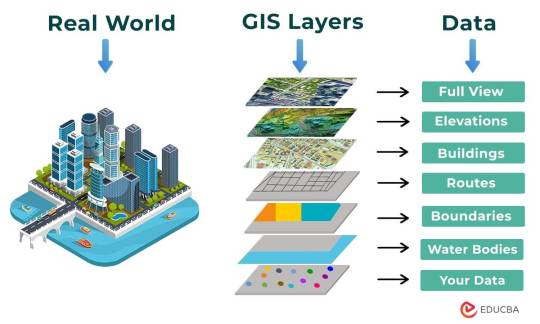
The following points elucidate the notable involvement of GIS in our daily lives:
Navigation and Location Services: GIS provides monitoring functions through the visual display of spatial data and precise geographical positioning of monitored vehicles, whereas GPS provides accurate, clear, and precise information on the position and navigation of a monitored or tracked vehicle in real-time and at the exact location.GIS is at the core of navigation applications and location-based services on smartphones. It enables accurate mapping, real-time navigation, and geolocation services, assisting individuals in finding locations, planning routes, and navigating unfamiliar areas.
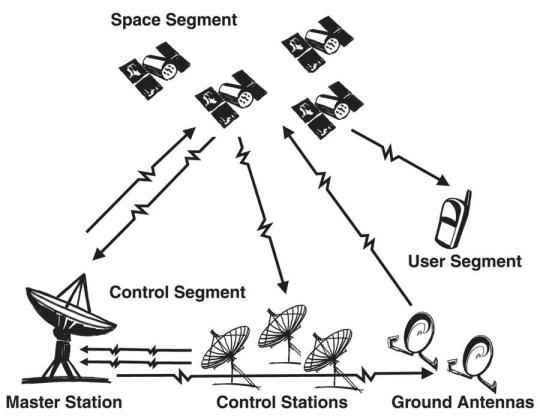
E-Commerce and Delivery Services: GIS software is a powerful tool for supply chain network planning. It helps determine the optimal location for distribution centers, warehouses, or other supply facilities. GIS is utilized in logistics and delivery services for optimizing routes, tracking shipments, and ensuring timely deliveries. E-commerce platforms leverage GIS to enhance the efficiency of their supply chain and last-mile delivery processes.

Weather Forecasting and Disaster Management: Many states are using GIS dashboard to monitor the rainfall across the state, on a real-time basis, from the data shared by rain sensors installed at various locationsGIS plays a crucial role in weather forecasting and disaster management. It assists meteorologists in analyzing spatial data, predicting weather patterns, and facilitating timely responses to natural disasters by mapping affected areas and coordinating emergency services.
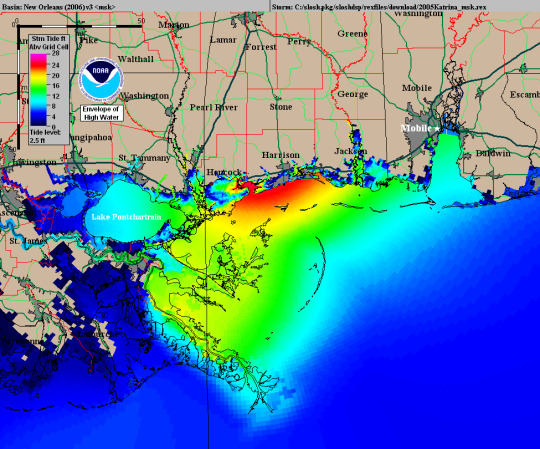
Healthcare Planning and Disease Monitoring: Geographic Information Systems enable the visualization and monitoring of infectious diseases. Additionally GIS records and displays the necessary information that health care needs of the community as well as the available resources and materials. GIS supports public health initiatives by mapping the spread of diseases, analyzing healthcare resource distribution, and assisting in the planning of vaccination campaigns. It aids in identifying high-risk areas and optimizing healthcare service delivery.
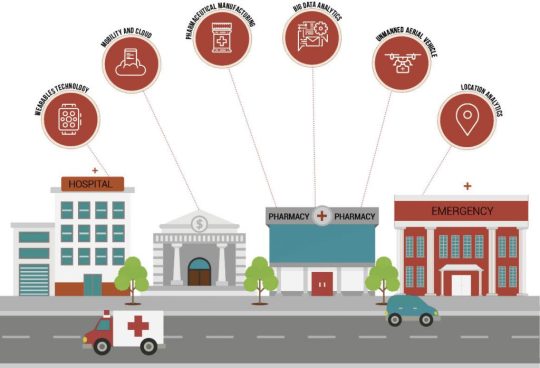
Social Media and Geo-tagging: GIS also helps in geotagging and other location related information in posts, it’s tools can map and visualize the spatial distribution of social media activity. This analysis can reveal trends, hotspots, and patterns in user engagement across different geographic areas. Many social media platforms incorporate GIS for geo-tagging, allowing users to share their location and experiences. This feature enhances social connectivity and facilitates the sharing of location-specific information.
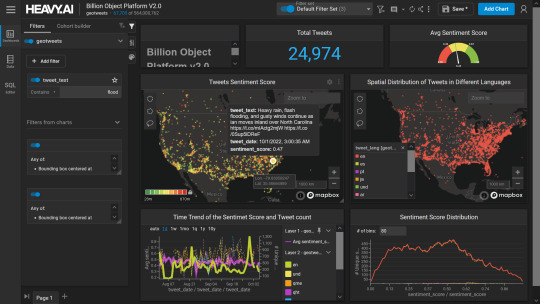
Smart City Initiatives: The Geographic Information System (GIS) offers advanced and user-friendly capabilities for Smart City projects and allows to capture, store and manipulate, analyze and visualize spatially referenced data. It is used for spatial analysis and modeling. It is the cornerstone of smart city planning, enabling the integration of data for efficient urban management. It supports initiatives related to traffic management, waste disposal, energy consumption, and overall infrastructure development.

Education and Research: GIS is increasingly utilized in education and research for visualizing and analyzing spatial data. It enables students and researchers to explore geographic relationships, conduct field studies, and enhance their understanding of various subjects.

Agricultural Management and Precision Farming: Farmers leverage GIS to optimize agricultural practices by analyzing soil conditions, crop health, and weather patterns. Precision farming techniques, facilitated by GIS, contribute to increased crop yields and sustainable farming practices.

Real Estate and Property Management: In the real estate sector, GIS aids in property mapping, land valuation, and site selection. It provides real estate professionals with valuable insights into spatial relationships, market trends, and optimal development opportunities.
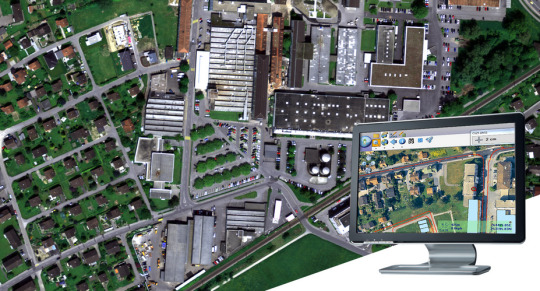
Tourism and Recreation: GIS enhances the tourism industry by providing interactive maps, route planning, and location-based information. It assists tourists in exploring destinations, finding attractions, and navigating efficiently.

The broad and varied involvement of GIS in our daily lives underscores its significance as a technology that not only facilitates geographic data analysis but also contributes to the efficiency, safety, and interconnectedness of modern society. As GIS applications continue to evolve, their impact on daily activities is expected to further expand and refine.
#gis#architectdesign#architecture#city#education#geographic information system(gis)#geographical indication
13 notes
·
View notes
Text
Streamlining Logistics: The Power of Transport Monitoring and Management Software
In today’s fast-paced world, efficient transportation and logistics are crucial for businesses looking to stay competitive and meet customer demands. Whether it’s managing a fleet of vehicles, monitoring deliveries, or optimizing routes, the right transport monitoring and management software can make all the difference. Let’s explore how this innovative technology streamlines logistics and drives success for businesses across industries.
Real-Time Tracking: Transport monitoring and management software provides real-time visibility into the location and status of vehicles in your fleet. With GPS tracking and advanced telematics technology, businesses can monitor vehicles’ movements, routes taken, and current statuses with pinpoint accuracy. This real-time tracking capability enables better decision-making, improved response times, and enhanced customer service.
Optimized Route Planning: One of the key benefits of transport monitoring and management software is optimized route planning. By analyzing factors such as traffic conditions, road closures, and delivery schedules, the software can generate the most efficient routes for vehicles to follow. This not only reduces fuel consumption and vehicle wear and tear but also ensures timely deliveries and customer satisfaction.
Fleet Maintenance Management: Keeping vehicles properly maintained is essential for ensuring their reliability and longevity. Transport monitoring and management software can automate fleet maintenance schedules, alerting businesses when vehicles are due for servicing or repairs. By proactively managing maintenance tasks, businesses can minimize downtime, prevent costly breakdowns, and extend the lifespan of their vehicles.
Driver Performance Monitoring: In addition to tracking vehicles, transport monitoring and management software can also monitor driver performance. From speed violations to harsh braking and acceleration, the software can capture data on various driving metrics and provide insights into driver behavior. This allows businesses to identify areas for improvement, promote safer driving practices, and reduce the risk of accidents and liabilities.
Compliance Management: Compliance with regulations and industry standards is a top priority for businesses operating in the transportation sector. Transport monitoring and management software can help businesses stay compliant by automatically recording and reporting data required for regulatory compliance. Whether it’s hours of service logs, driver qualification files, or vehicle inspection records, the software ensures that businesses meet all necessary requirements and avoid costly fines or penalties.
Data Analytics and Reporting: Transport monitoring and management software offer robust data analytics and reporting capabilities, allowing businesses to gain valuable insights into their operations. From fuel efficiency and vehicle utilization to delivery performance and customer satisfaction, businesses can access a wealth of data to inform strategic decision-making and drive continuous improvement initiatives.
Scalability and Integration: As businesses grow and evolve, they need scalable solutions that can adapt to their changing needs. Transport monitoring and management software offer scalability, allowing businesses to add or remove features and functionalities as needed. Additionally, the software can integrate seamlessly with other systems and technologies, such as enterprise resource planning (ERP) systems and warehouse management systems (WMS), enabling seamless data sharing and workflow automation.
In conclusion, transport monitoring and management software are indispensable tools for businesses looking to streamline logistics, improve efficiency, and drive success in today’s competitive market. From real-time tracking and optimized route planning to fleet maintenance management and compliance, the benefits of this innovative technology are clear. By investing in transport monitoring and management software, businesses can unlock new levels of productivity, cost savings, and customer satisfaction, positioning themselves for long-term growth and success.
#artificial-intelligence#gps tracking devices for automobiles uaecc#Logistics#supply-chain-management#sustainability#technology#transport monitoring and management software#transportation
0 notes
Text
Navigating Success: Unveiling the Power of GPS Fleet Tracking Software in the UAE
In the fast-paced landscape of the United Arab Emirates (UAE), where efficiency and precision are paramount in every industry, the integration of GPS fleet tracking software has become a game-changer. This technology not only revolutionizes the way businesses manage their fleets but also enhances operational efficiency, reduces costs, and ensures a seamless workflow. In this blog, we delve into the significance and benefits of GPS fleet tracking software in the UAE.
The UAE's Dynamic Business Environment: The UAE, known for its bustling cities and thriving industries, has a diverse business ecosystem ranging from logistics and transportation to construction and services. In such a dynamic environment, the need for streamlined fleet management is imperative. GPS fleet tracking software emerges as a vital tool to monitor and optimize fleet operations, providing companies with a competitive edge.
Real-Time Visibility and Location Accuracy: One of the primary advantages of GPS fleet tracking software is real-time visibility into the location and status of vehicles. This feature proves invaluable for businesses in the UAE, where time-sensitive deliveries and efficient route planning are critical. Fleet managers can track vehicles on a live map, enabling them to make informed decisions, minimize delays, and enhance overall productivity.
Optimized Route Planning and Fuel Efficiency: Navigating through the bustling streets of Dubai, Abu Dhabi, or any other city in the UAE can be challenging. GPS fleet tracking software empowers businesses to optimize routes based on real-time traffic data, reducing travel time and fuel consumption. This not only contributes to a greener environment but also significantly cuts operational costs for businesses.
Enhanced Security and Asset Protection: In a region where security is a top priority, GPS fleet tracking software plays a crucial role in ensuring the safety of vehicles and assets. The software provides instant alerts for unauthorized vehicle usage, route deviations, or any suspicious activities, allowing fleet managers to take immediate action. This not only deters theft but also helps in swift recovery in case of an unfortunate incident.
Compliance and Reporting: With stringent regulations governing the transportation industry in the UAE, compliance is non-negotiable. GPS Vehicle Tracking System Company in UAE aids companies in adhering to local laws and regulations by providing accurate data on driver behavior, working hours, and vehicle maintenance. This not only ensures legal compliance but also helps in mitigating risks and liabilities.
Improved Customer Service: In a customer-centric market like the UAE, delivering goods and services on time is paramount. GPS fleet tracking software enables businesses to provide accurate delivery ETAs to customers, enhancing overall satisfaction. The ability to provide real-time updates and notifications creates transparency and trust, fostering long-term relationships with clients.
Conclusion: As the business landscape in the UAE continues to evolve, embracing technological advancements becomes imperative for sustainable growth. GPS fleet tracking software stands as a beacon of efficiency, offering businesses in the UAE the tools they need to navigate the complexities of fleet management successfully. From real-time visibility and route optimization to enhanced security and compliance, the benefits of GPS fleet tracking software extend far beyond the roads, shaping a future where precision and productivity reign supreme.
#Fleet Management Software Dubai#Vehicle tracking software dubai#Fleet tracking software#Transport Monitoring and Management Software
0 notes
Text
How SCADA Works?
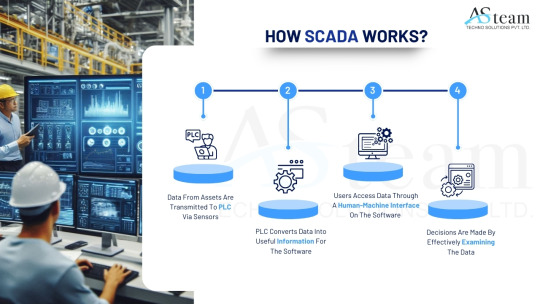
Supervisory Control and Data Acquisition (SCADA) systems are critical in managing and monitoring industrial processes across various industries, including manufacturing, utilities, transportation, and energy.
Field Devices
At the process level, field devices like sensors, meters, and actuators are used to monitor variables like voltage, flow, temperature, and pressure. These gadgets collect information and carry out system-directed operations.
Remote Terminal Units (RTUs) and Programmable Logic Controllers (PLCs)
The SCADA software and the field devices are connected by RTUs and PLCs. After gathering information from the sensors, they transmit it to the control center. Additionally, the SCADA system may send them orders to modify settings or control actuators.
Communication Infrastructure
Strong communication networks are necessary for SCADA to transmit data between the control center and field equipment. This infrastructure can be wireless (such as satellite, radio, and cellular networks) or wired (such as Ethernet and fiber optics).
Centralized Control Station
SCADA software, which analyzes data, creates visualizations, and gives operators tools to monitor and manage operations, is housed in the control station.
Human-Machine Interface (HMI)
The SCADA system's user interface is called the HMI. Operators can engage with the system and make well-informed decisions because to its graphical depictions of processes, warnings, and trends.
#automation#SCADA#PLC#HMI#Automation#Technology#business and industry sectors#business#industrial automation#soft starter#software#software engineering
3 notes
·
View notes
Text
What is Freight Brokerage & Freight Forwarding Software
What is Freight brokerage and freight forwarding software?
Freight brokerage software allows a shipper to find carriers, manage the rates or tariffs as well as the contracts, and even track shipments. This eliminates the difficulties involved in the procedure and helps in making the admittance of new companies efficient as well as easy by automating these tasks. Freight forwarding software on another hand covers everything to do with shipping, from documents to storage and most importantly legal compliance with trade laws. Therefore, while brokerage software is primarily into matching shippers with carriers, forwarding is a software that handles the entire shipping process. Considering these disparities makes the functioning of transport brokers more effective and has a strong effect on the outcomes of their cooperation with clients.

Differences between Freight Forwarding & Freight Brokerage
Aspect
Freight Forwarding
Freight Brokerage
Primary Role
Manages the whole shipping process
Connects shippers with carriers
Physical Possession
Takes physical possession of the cargo
Does not take possession of the cargo
Services Provided
Handles documentation, storage, and transportation
Arranges transport contracts between shippers and carriers
Scope of Operations
Provides end-to-end logistics solutions
Focuses on negotiating and arranging transport
Customer Interaction
Simplifies trade regulations and logistics for businesses
Primarily negotiates and arranges transportation
Benefits of Using Freight Forwarding and Brokerage Software
Operational Efficiency
Freight forwarding and brokerage software significantly streamline operations, automating tasks such as load board management and carrier selection, which reduces manual efforts and enhances efficiency. Real-time tracking and automated notifications ensure smooth operational flow, minimising delays and errors.
Cost Savings
Implementing this software leads to direct cost savings by optimising route selection and reducing idle times, thereby cutting down on fuel and maintenance expenses. Automated invoice management and accurate rate calculations prevent financial discrepancies and reduce administrative costs.
Scalability
The software adapts to business growth, allowing easy integration of additional modules as needed. This flexibility supports expanding operational demands without the need for significant system overhauls, making it a future-proof investment.
Improved Tracking and Visibility
Advanced tracking features provide real-time data on shipments, enhancing visibility across the supply chain. This transparency helps in better managing expectations and reduces the risk of shipment delays.
Better Customer Service
Freight software enhances customer service by providing detailed tracking information and efficient issue resolution processes. This increases customer satisfaction and fosters loyalty.
Data Insights and Reporting
Comprehensive analytics tools offered by these software systems enable detailed performance monitoring and decision-making support. Insights gained from real-time data help in identifying inefficiencies and improving overall business strategies.
Conclusion
All these digital solutions are not only expected to improve flexibility in the operational processes but also to maximise cost efficiency and customer experience. To them they hold the potential of offering even more optimization, helping logistics specialists fine-tune solution provision. It’s important for organisations to adopt these technologies as they provide a competitive advantage through optimisation and valuable business intelligence. In this case, the integration of such systems is a business strategy well embraced by companies in the transport commission agent business due to ever changing market opportunities in the expanding global economy. Overall, the use of advanced freight software is not a trend but a revolution for FDI that opens the future of global logistics facilitating transnational business.
2 notes
·
View notes
Text
What is Enterprise Fleet Management?
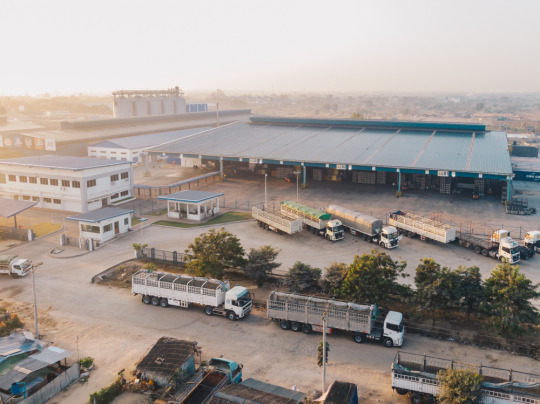
As is revealed in today’s world business environment, any organization must manage its resources appropriately. Thus, for companies and firms having major operations related to transportation and logistics, it becomes even more essential to manage their fleets.
Now, let’s start with the basics: what does enterprise fleet management mean? Now let’s discuss this idea and figure out how it can be of great benefit to the business processes.
Understanding what is Enterprise Fleet Management
Fleet management within an enterprise could be described as a strategic approach to managing and supervising such a company's vehicle fleet. The areas include its acquisition and maintenance, driver and vehicle management, and laws governing the automobile industry. Fleet management is prospective to optimize the operating costs and enhance the safety and productivity of both fleets and their drivers.
In an enterprise environment, fleet management goes beyond tracking the vehicles; it is more about getting improved ways of running organizations. Fleet management is important irrespective of whether it involves delivery vans, trucks, or even corporate cars if the business owns a set of cars for business use.
The outcome highlights the fundamental issues of fleet management.
Vehicle Acquisition and Disposal: Picking the correct car for your fleet, beginning from procurement to the time of disposal.
Maintenance and Repair: Managing to schedule vehicles for maintenance and repairs regularly to make sure that they are in good working condition to reduce time loss.
Fuel Management: Fuel efficiency management by controlling consumption and considering these to minimize fuel expenses by using fuel-efficient driving techniques and other energy resources.
Driver Management: Incorporating training and supervision of drivers as well as planning meals nt to support safety, compliance, and efficiency among the drivers.
Compliance and Risk Management: The safety of all the used vehicles as well as the used drivers with brutal and international requirements and managing of risk exposures of operating fleets.
Here we will discuss the concept of Fleet Management Software. Inefficiently managing all these components, many businesses turn to the use of fleet management software. This is because it acts as a platform for accessing any information regarding the fleet, including real-time data and automated operations of the fleet.
Key Features of Fleet Management Software
GPS Tracking: Precise vehicle location in real-time to increase efficiency and controllers.
Maintenance Scheduling: Schedule reminders in case of preventive maintenance and repairs to avoid ‘bottlenecks Management: Proper equipment that tracks fuel usage and gives an indication of wasteful activities.
Compliance Management: Material properties garages need to comply with set safety measures as well as regulatory requirements.
Driver Performance Monitoring: Measures to monitor and measure drivers’s performance, detect their training requirements, and incentivize them over safe behavior on roads.
Why Enterprise Fleet Management is So Important
To large companies, fleet management is not only limited to planning on how to ensure that vehicles are running. It’s about being able to harness data and technology in a way that will put you ahead of the competition. Effective management of fleets is known to have numerous benefits, such as cutting costs, satisfying customers, and reducing risks involving drivers and cars, among others.
However, due to emerging issues such as global warming, companies are now focusing on the use of fleets to be environmentally friendly. This is done through the optimization of routes, timely maintenance of vehicles, and training of the drivers to ensure they are conscious of the impact they make on the environment.
Being a web-based service, the most advantageous aspect related to an FMS or a Fleet Management Software Development Service is that it can be easily and effectively utilized across the corporate fleet range.
This has led to the increasing need for the development of fleet management software to be able to meet the expanding market need. Custom software, as the name suggests, is designed to improve organizational operations to suit a company’s needs, making it more flexible than packaged software.
A fleet management software development service typically includes
Consultation and Needs Assessment: Ah, awareness of the particular requirements and objectives of your fleet. You need to hire a professional fleet management software development company.
Custom Software Development: Constructing a custom fit that incorporates into the complex structures of the organization and fits the needs of the organization perfectly.
Integration with IoT Devices: The use of Internet of Things (IoT) devices such as GPS trackers or sensors to input real-time information and data.
Ongoing Support and Maintenance: Needed to make sure the software will continue to include all the features and incorporate the latest technologies and that it will cover all current needs of the business.
Conclusion
Okay, then, Fleet management is a system that encompasses all activities that involve control of a company’s fleet of vehicles with the use of the latest technologies in software and quality practices. Fleet management is not only a good idea but a necessity for any business that depends on transportation, where proper management of the company’s fleet is critical to achieving success.
Let it be a handful of vehicles or a multitude, the appropriate strategy in fleet management as enhanced by software changes the equation, provides steps towards optimizing your operations, lowers costs, and enhances the performance of an organization. The fast advancement of technology means that the means and ways used in the implementation of the strategies by the f managers are ever-changing and therefore a very promising industry to follow.
#business growth#fleet management#fleet maintenance#enterprise software#enterprise application development#business solutions#software#trending#viralpost#viral trends
2 notes
·
View notes
Text
Transforming Fleet Efficiency: Innovations in Fuel Management and Advanced Transportation Solutions
In the realm of logistics and transportation, the optimization of fleets plays a pivotal role in ensuring operational efficiency and cost-effectiveness. Central to this optimization are innovative technologies such as fuel management systems, fuel monitoring sensors, logistics management software, transportation management solutions, and driver behavior monitoring systems. These integrated solutions have emerged as game-changers in the industry, offering a comprehensive approach towards enhancing fleet performance and reducing operational overheads.
Fuel Management Systems for Fleet Efficiency
Fuel is a significant cost factor in fleet operations. As such, precise management of fuel consumption becomes paramount. Fuel management systems for fleet provide a holistic approach to monitor, track, and manage fuel usage across the fleet. These systems incorporate sophisticated software and hardware components that enable real-time monitoring of fuel levels, identification of inefficiencies, and detection of potential anomalies such as fuel theft or excessive consumption.
By leveraging advanced analytics and reporting tools, fleet managers can gain actionable insights into fuel usage patterns, allowing for informed decision-making. Optimization of routes, maintenance scheduling, and vehicle performance analysis are among the many benefits offered by these systems, ultimately leading to reduced fuel costs and increased operational efficiency.
Fuel Monitoring Sensors: Real-time Insights into Consumption
Complementing fuel management systems, fuel monitoring sensors are instrumental in providing real-time data on fuel levels, consumption rates, and even fuel quality. These sensors, often integrated with vehicles’ fuel tanks, continuously transmit data to centralized systems. This data aids in proactive decision-making, enabling prompt responses to fluctuations in fuel levels and identifying potential issues such as fuel leakages or irregular consumption patterns.
The ability to access precise and timely information empowers fleet managers to optimize refueling schedules, prevent fuel theft, and ensure compliance with environmental regulations by monitoring emissions. Ultimately, this proactive approach enhances overall fleet productivity and reduces unnecessary fuel expenses.
Logistics Management Software: Streamlining Operations
In today’s complex logistics landscape, the role of logistics management software cannot be overstated. These comprehensive platforms offer end-to-end solutions for managing various aspects of transportation and supply chain operations. From order processing and inventory management to route optimization and shipment tracking, logistics management software centralizes and automates critical processes.
Integration with fuel management systems allows for seamless data exchange, facilitating more accurate cost calculations and improved resource allocation. Real-time visibility into inventory levels, delivery schedules, and vehicle availability empowers logistics teams to make informed decisions promptly, thereby enhancing operational efficiency and customer satisfaction.
Transportation Management Solutions: Optimizing Workflow
Transportation management solutions encompass a broader spectrum of tools and technologies designed to streamline and optimize the movement of goods and resources. These solutions leverage advanced algorithms and data analytics to optimize route planning, load balancing, and carrier selection.
Integration with fuel management systems and logistics management software creates a unified ecosystem, enabling a synchronized approach to fleet operations. From reducing empty miles to improving delivery timelines, these solutions play a crucial role in enhancing cost-effectiveness and operational agility.
Driver Behavior Monitoring Systems: Enhancing Safety and Efficiency
Drivers are the linchpin of fleet operations. Driver behavior monitoring systems utilize telematics and IoT devices to track and analyze driver performance metrics such as speed, braking habits, and idling time. By providing insights into driver behavior, these systems facilitate the implementation of training programs and incentive structures to improve safety and fuel efficiency.
Moreover, the integration of driver behavior data with other systems offers a comprehensive view of fleet operations. Identifying and addressing inefficient driving habits not only reduces fuel consumption but also enhances overall fleet safety and compliance.
In conclusion, the integration of fuel management systems, fuel monitoring sensors, logistics and transportation management software, and driver behavior monitoring systems represents a transformative approach in optimizing fleet operations. The synergy among these technologies empowers organizations to achieve higher levels of efficiency, cost savings, and sustainability in today’s dynamic transportation landscape. As technology continues to evolve, embracing these innovations becomes imperative for businesses seeking to stay ahead in the competitive realm of logistics and transportation.
#fuel management system for fleet#fuel monitoring sensor#logistics management software#transportation management solutions#driver behaviour monitoring system
0 notes
Text
Transportation Management System
Navigating Efficiency: The Benefits of a Transport Management System (TMS)
In an increasingly globalized and fast-paced world, effective transportation is key to business success. Companies are constantly seeking ways to streamline operations, reduce costs, and improve service quality. Enter the Transport Management System (TMS)—a software solution designed to optimize transportation logistics. We’ll explore what a TMS is, how it benefits businesses, and why investing in a TMS might be one of the smartest moves you make for your supply chain.
What is a Transport Management System?
A Transport Management System (TMS) is a specialized software solution used to plan, execute, and optimize the movement of goods. It provides a comprehensive platform to manage transportation processes, including route planning, carrier management, shipment tracking, and freight payment. By integrating with other supply chain systems, a TMS offers a centralized hub for managing logistics operations and improving overall efficiency.
Key Features of a TMS
Route Optimization:
The features of a TMS are its ability to optimize routes. By analyzing factors such as traffic conditions, weather, and delivery windows, a TMS helps businesses select the most efficient routes, reducing transportation costs and delivery times.
Carrier Management:
A TMS simplifies the process of selecting and managing carriers. It provides access to a database of carriers, allows for rate comparisons, and facilitates carrier negotiations. This feature ensures that businesses can choose the best carriers based on cost, service quality, and performance metrics.
Real-Time Tracking:
With real-time tracking capabilities, a TMS allows businesses to monitor shipments as they move through the supply chain. This visibility helps in proactively addressing any issues that arise, such as delays or disruptions, and provides customers with accurate delivery estimates.
Freight Audit and Payment:
A TMS automates the freight audit and payment process, ensuring that invoices are accurate, and payments are processed efficiently. This helps in identifying discrepancies, reducing billing errors, and managing transportation costs effectively.
Reporting and Analytics:
Advanced reporting and analytics tools within a TMS provide valuable insights into transportation performance. Businesses can analyze key metrics such as delivery times, costs, and carrier performance to make data-driven decisions and improve operational efficiency.
Benefits of Implementing a TMS
Cost Reduction:
A TMS helps businesses reduce transportation costs through route optimization, carrier management, and efficient freight auditing. By streamlining these processes, companies can achieve significant savings on fuel, labor, and other transportation-related expenses.
Improved Efficiency:
By automating routine tasks and providing real-time visibility, a TMS enhances operational efficiency. Businesses can reduce manual paperwork, minimize errors, and speed up the decision-making process, leading to smoother and more efficient logistics operations.
Enhanced Customer Service:
With real-time tracking and accurate delivery estimates, a TMS improves customer satisfaction. Customers can receive timely updates on their shipments, leading to greater transparency and trust in the delivery process.
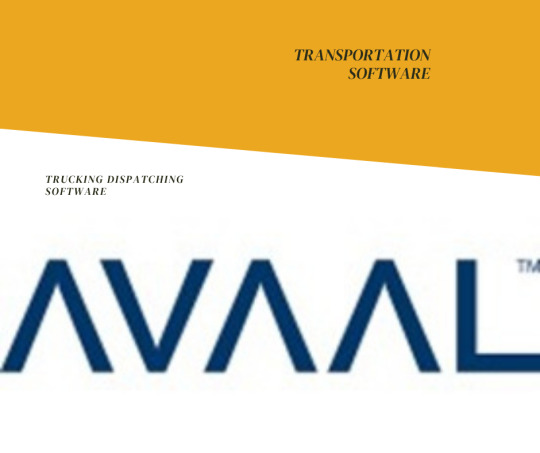
Better Decision-Making:
The data and insights provided by a TMS enable businesses to make informed decisions. Analyzing transportation performance and cost data helps in identifying areas for improvement, optimizing supply chain strategies, and enhancing overall operational performance.
Scalability and Flexibility:
A TMS is designed to scale with your business. Whether you’re expanding operations, adding new transportation modes, or entering new markets, a TMS can adapt to changing needs and support growth.
Choose Right TMS of Your Business
When selecting a TMS, it’s important to consider your specific needs and objectives. Look for a system that aligns with your business size, industry requirements, and budget. Key factors to evaluate include ease of integration with existing systems, user-friendliness, customer support, and the scalability of the solution.
The Future of TMS
As technology continues to evolve, the future of TMS is bright. Innovations such as artificial intelligence, machine learning, and blockchain are set to further enhance the capabilities of TMS. These advancements promise to offer even greater efficiency, accuracy, and security in transportation management.
Conclusion
A Transport Management System (TMS) is a powerful tool that can transform transportation logistics, delivering substantial benefits in terms of cost savings, efficiency, and customer satisfaction. By leveraging the advanced features and capabilities of a TMS, businesses can navigate the complexities of modern supply chains with greater ease and confidence. Investing in a TMS is not just about keeping up with industry trends it's about staying ahead and achieving operational excellence in a competitive market.
2 notes
·
View notes